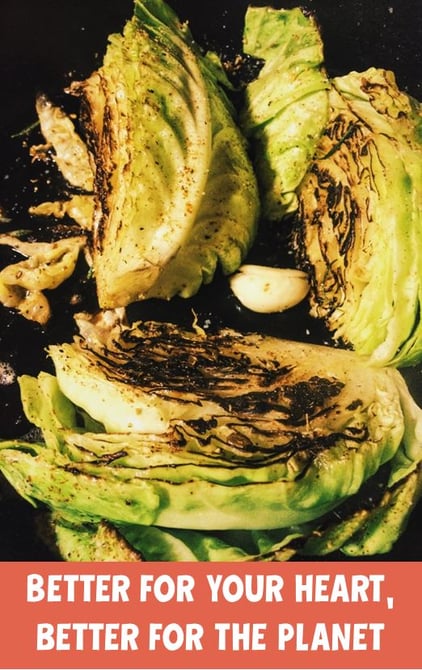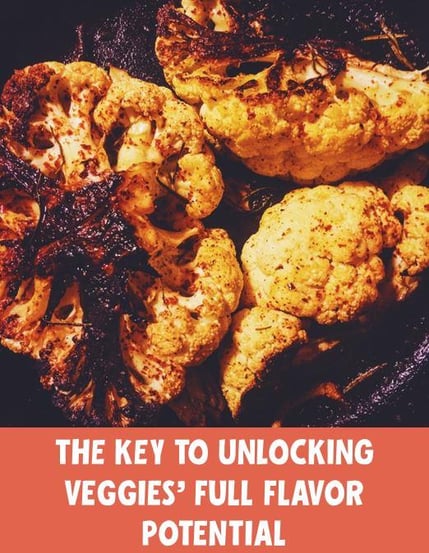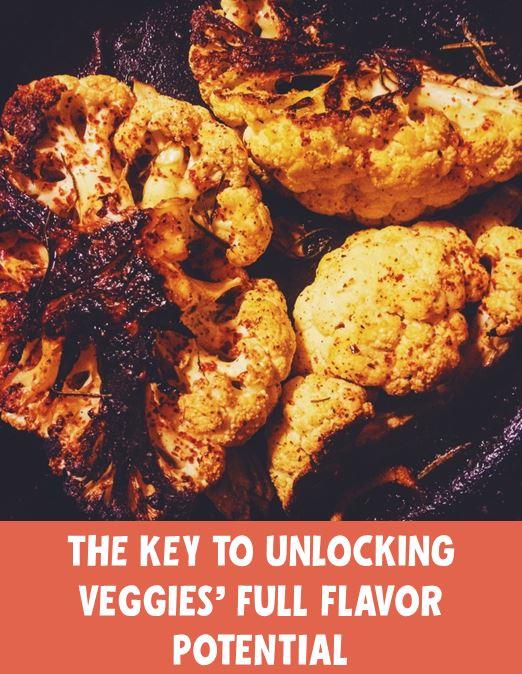 There is no doubt that vegetables are “having a moment” – odd when you think about it since they are the foundation of pretty much all cuisine. Sure, tearing into a perfectly seared 2-inch thick ribeye is satisfying and delicious. Just the thought of its juicy flesh can illicit caveman cravings in most of us. But it isn’t exactly healthy for either the person consuming the gigantic steak or the planet. It seems like everywhere you turn these days vegetables are getting the glory they finally deserve – the varieties are almost endless, the colors are explosive, and the wide-ranging rainbow of flavors that can be unlocked from them is unmatched. I like meat as much as the next person, I really do. But if you ask most chefs these days what they are most excited about cooking it is the vegetables – now that diners are willing to consider their elevated status as menu-worthy.
There is no doubt that vegetables are “having a moment” – odd when you think about it since they are the foundation of pretty much all cuisine. Sure, tearing into a perfectly seared 2-inch thick ribeye is satisfying and delicious. Just the thought of its juicy flesh can illicit caveman cravings in most of us. But it isn’t exactly healthy for either the person consuming the gigantic steak or the planet. It seems like everywhere you turn these days vegetables are getting the glory they finally deserve – the varieties are almost endless, the colors are explosive, and the wide-ranging rainbow of flavors that can be unlocked from them is unmatched. I like meat as much as the next person, I really do. But if you ask most chefs these days what they are most excited about cooking it is the vegetables – now that diners are willing to consider their elevated status as menu-worthy.
Being a chef, people often ask me what my favorite thing is to cook – a sort of ambiguous question like asking a famous author what their favorite book is or asking Beyoncé to name her favorite song. As if I am going to blurt out something specific like “lamb” or “eggplant.” We are chefs precisely because we love the variety and endless possibility of the ingredients; vegetables provide exactly that. There are only a handful of commonly consumed terrestrial animals in the marketplace, but there are hundreds if not thousands of different edible vegetables and they are increasingly appearing at supermarkets everywhere.
Vegetables Edging Meat Out of Center Stage at Meals
I have blogged before about my involvement with Menus of Change, a collaborative initiative developed by the Culinary Institute of America and Harvard. Menus of Change has identified as one of their major causes the movement to shift animal protein to the “side of the plate” and use it more as a garnish for whole grains, vegetables, and even fruit (I have seen the teriyaki-inspired grilled pineapple “steak” on several menus this year). Here at Great Harvest, I am working on a line of soon-to-be-released salads and grain bowls that do precisely that – move the animal protein to garnish status, or, in the case of several of the dishes, remove it completely.
 It being American Heart Month, I encourage everyone to start treating their vegetables like meat. What do I mean by that? Treating vegetables like meat means using cooking techniques and flavor development strategies to unlock the savory umami potential locked up inside a humble carrot or a head of cauliflower or cabbage. The principle is really no different than the now-common practice of grilling vegetables. I remember back in the early 90’s as a budding young cook being absolutely amazed when I tasted my first grilled asparagus, bathed in balsamic, olive oil, pepper and coarse sea salt. It doesn’t sound very revolutionary now, but as a kid from the Midwest in that era dinner vegetables were always boiled, steamed, or microwaved.
It being American Heart Month, I encourage everyone to start treating their vegetables like meat. What do I mean by that? Treating vegetables like meat means using cooking techniques and flavor development strategies to unlock the savory umami potential locked up inside a humble carrot or a head of cauliflower or cabbage. The principle is really no different than the now-common practice of grilling vegetables. I remember back in the early 90’s as a budding young cook being absolutely amazed when I tasted my first grilled asparagus, bathed in balsamic, olive oil, pepper and coarse sea salt. It doesn’t sound very revolutionary now, but as a kid from the Midwest in that era dinner vegetables were always boiled, steamed, or microwaved.
Now, if you haven’t noticed when eating out, deeply seared and roasted vegetables have caught on as a center-of-the-plate item meant to be the star of the show. This is a major shift from the way vegetables were commonly presented in the past, where you might have expected to see a few token florets of broccolini surrounding an 8-ounce filet. Whether or not $18 is “worth it” for a plate of three roasted carrots when dining out is subjective. But, when cooking at home, the technique is simple, the process fun, and the possibilities are endless.
How Do You Do It?
Start with big pieces of whatever your vegetable pick of the day is. Cruciferous items like cauliflower, cabbage, Romanesco, Brussel’s sprouts and broccoli work really well – something about their sulfurous nature helps them get incredibly umami-rich once roasted. Things with natural sugariness work very well too, carrots and beets being the most famous.
A cast iron skillet is essential – if you don’t have one, stop reading this. Go to your local hardware store and buy one. Or go to your mom’s house and steal one from her kitchen. I bought my younger brother Wes his first one for Christmas this year, and he informs me he now uses it almost every night.
- Take a cast iron skillet and set it over medium heat. Turn the oven on to 450 degrees.
- Cut whatever vegetable you are using in really big pieces. Cabbage in quarters, carrots can be left whole or halved cross-wise, cauliflower is even amazing roasted whole.
- Add some heart-healthy extra virgin olive oil to the skillet and allow it to heat for 30 seconds or so. Sprinkle kosher salt in the bottom of the skillet. Carefully lay in the vegetables in a single layer, so they do not touch. Sprinkle with more kosher salt and crack some pepper on top.
- Do not touch, move, or disturb the vegetables for at least five to seven minutes. Resist the temptation. The sear at this stage is essential. Using tongs, lift a corner of a vegetable to peak at the color. If it is deeply browned, bordering on slightly black, turn the vegetables over.
- At this point, you can add the “flavor” and the sky is really the limit. Start with something simple, as I did in the pictures here to really appreciate the power of the vegetable’s star power. I added a crushed garlic clove, a sprinkling of Aleppo pepper (crushed red pepper works too) a few stripped leaves of fresh rosemary from the pot growing in my living room, and a squeeze from half a lemon.
- Slide the skillet into the hot oven and roast until tender and delicious – depending on the vegetable, that can take anywhere from five minutes to 20-30 for a whole cauliflower.
I typically serve drizzled with a touch more lemon juice and a drizzle of flax oil (loaded with heart-healthy omega-3 fatty acids).
Once you begin to master the basic technique, try adding other flavors like curry powder, cumin seeds, sumac and sesame, ginger, soy and fish sauce, sunflower and pumpkin seeds, pistachios, or a light shaken vinaigrette to finish.
Try this at home this week if you have not already. Trust me; you don’t need the pork chop to go with this. The vegetable is the main event – hop on this flavor train before it leaves you behind. Your heart and the planet (and quite possibly, your wallet) will thank you.





